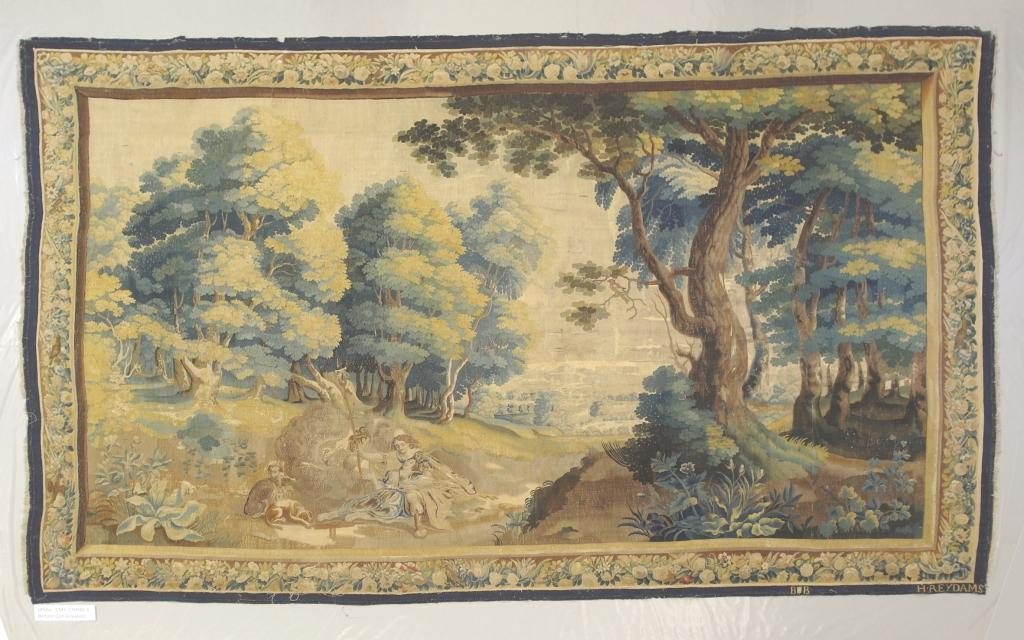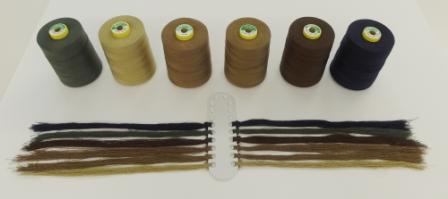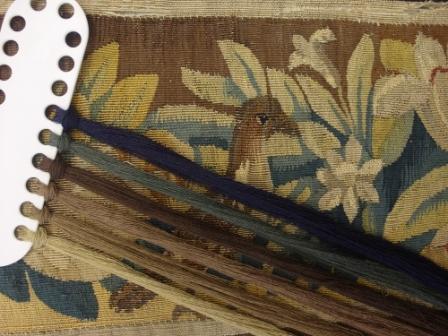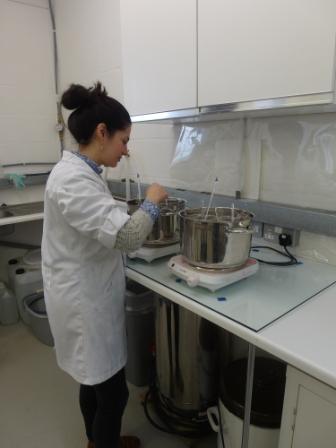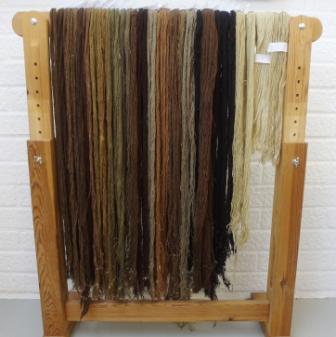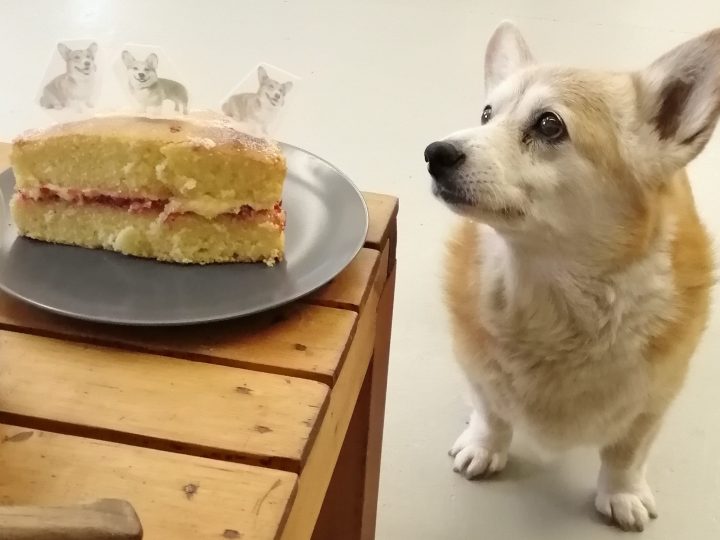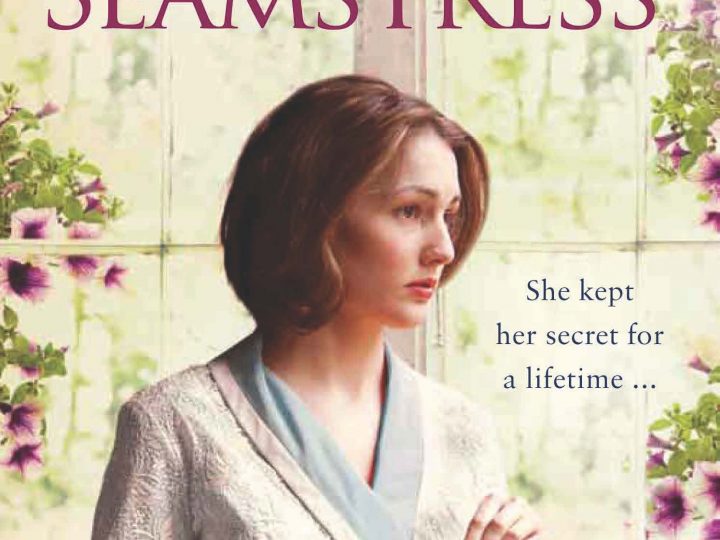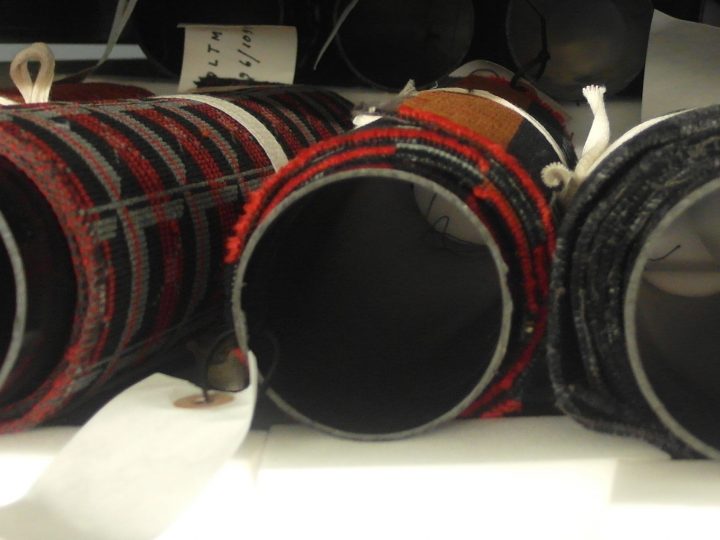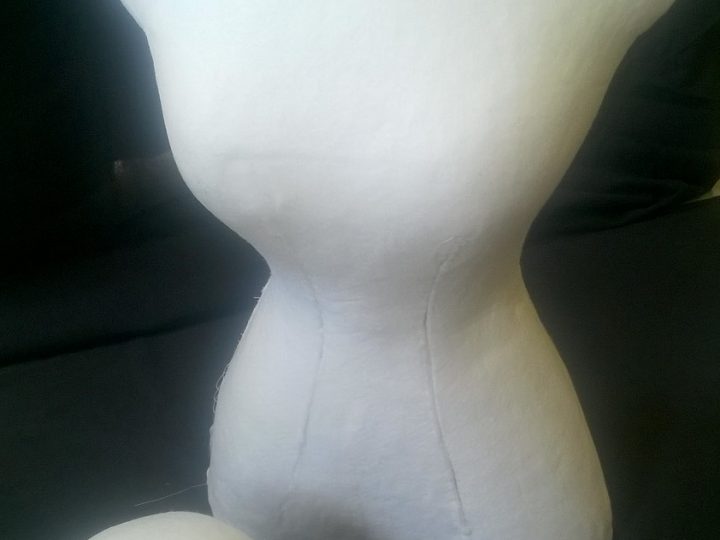Conservation of the Tapestries from the Spangled Bedroom at National Trust Property Knole by May Berkouwer Textile Conservation
We are currently working on a tapestry from National Trust property Knole in Kent. As tapestry conservation is a lengthy process, tapestries can be removed from display for several years. Whilst the work is carried out at the studio, we provide the property with regular Bulletins for their visitors to keep them updated on the progress. We thought we would share our first property Bulletin below:-
Bulletin 1: Threads and Yarns, November 2016
The Spangled Bedroom at Knole is undergoing full conservation treatment.
The walls were covered with four tapestries from a set depicting the stories from Ovid’s ‘Metamorphoses’. They were made by Hendrik II Reydams and woven in Brussels around 1680 -1690.
The tapestries were cleaned by The Royal Manufacturers De Wit, a specialist cleaning facility in Mechelen, Belgium.
The conservation treatment is being carried out at two separate textile conservation studios, working on two tapestries each.
At our studio in Suffolk we started working on the second largest of the four tapestries last Summer.
The first step was to source and prepare all the materials needed for treatment.
The tapestries will be supported on to a full linen backing by specialist tapestry stitching techniques.
Slit Stitching:
Slits occur in a tapestry where two colours meet. At the end of the weaving process these were stitched together with linen threads. Over time these deteriorate and fail, leaving the slits gaping and the tapestry at risk.
An important part of tapestry conservation is to secure and re-stitch these slits.
The thread we use needs to be strong and blend in with the original thread and surrounding areas.
We use a Coats Dual Duty thread which has a polyester core and is wrapped in natural cotton. The core provides the strength and durability needed, while the cotton wrap gives a natural, matt finish that blends in with the tapestry.
We chose a palette of 6 colours to work with across the tapestry.
Silk areas:
Throughout the tapestries there are many large and small areas of silk weaving which have suffered from light damage, resulting in weak areas and loss of material.
To infill and strengthen these areas we use DMC stranded cottons. These come in a wide range of good quality colours and have a low sheen finish that blends with the remaining silk.
Wool areas:
Wool yarns are used to infill any areas of missing wool weft across the tapestry and to replace any missing or broken warps.
The dark brown wool weft in tapestries is the most vulnerable to degradation and loss. This colour is often used in the outlining of figures and therefore the overall appearance of the design is significantly altered when this is missing.
The deterioration in the dark brown wool is due to the iron salts used to fix the dyes. These iron salts speed up the degradation of the wool fibres resulting in losses.
We aim to match the yarn thickness used in the original weaving as closely as possible.
Many different yarn samples were compared to find the one best suited to these tapestries. A 2 ply, tightly spun, fine yarn matched the best for the infill and a 3 ply for the re-warping.
Wherever possible we use commercially supplied colours; Ciba Geigy chemical dyes are being used for this process as they offer a high level of colour fastness causing minimal fibre damage to the wool during the dye process.
With all the threads and yarns in place we are ready to progress to the stitching phase of the treatment.

